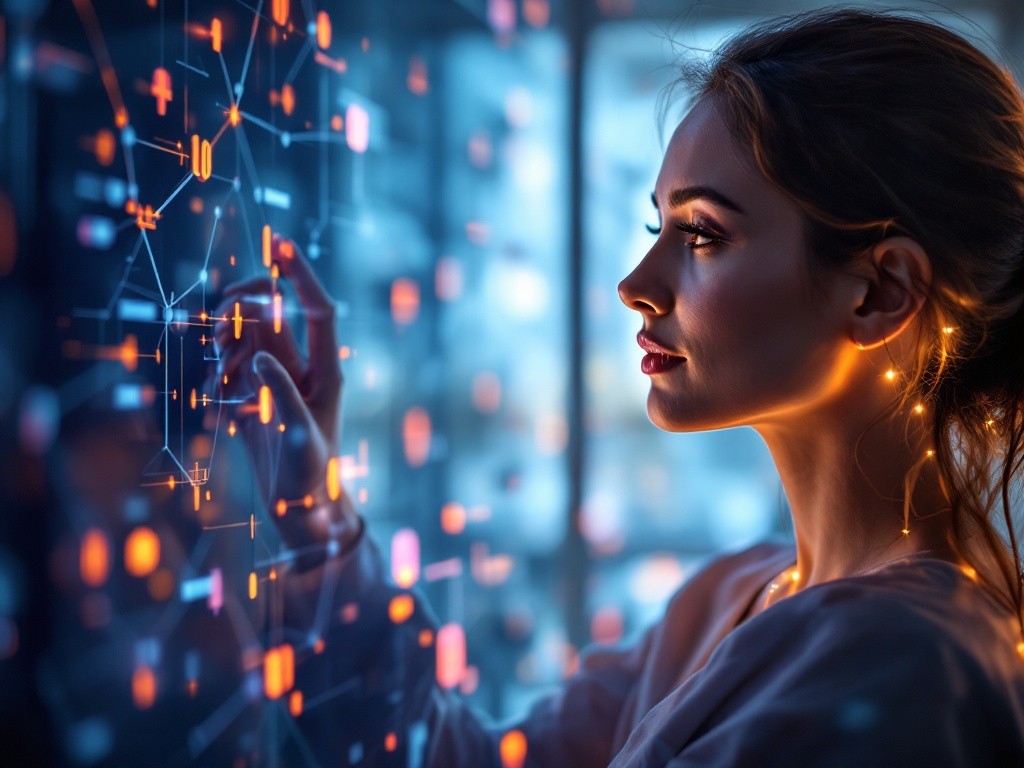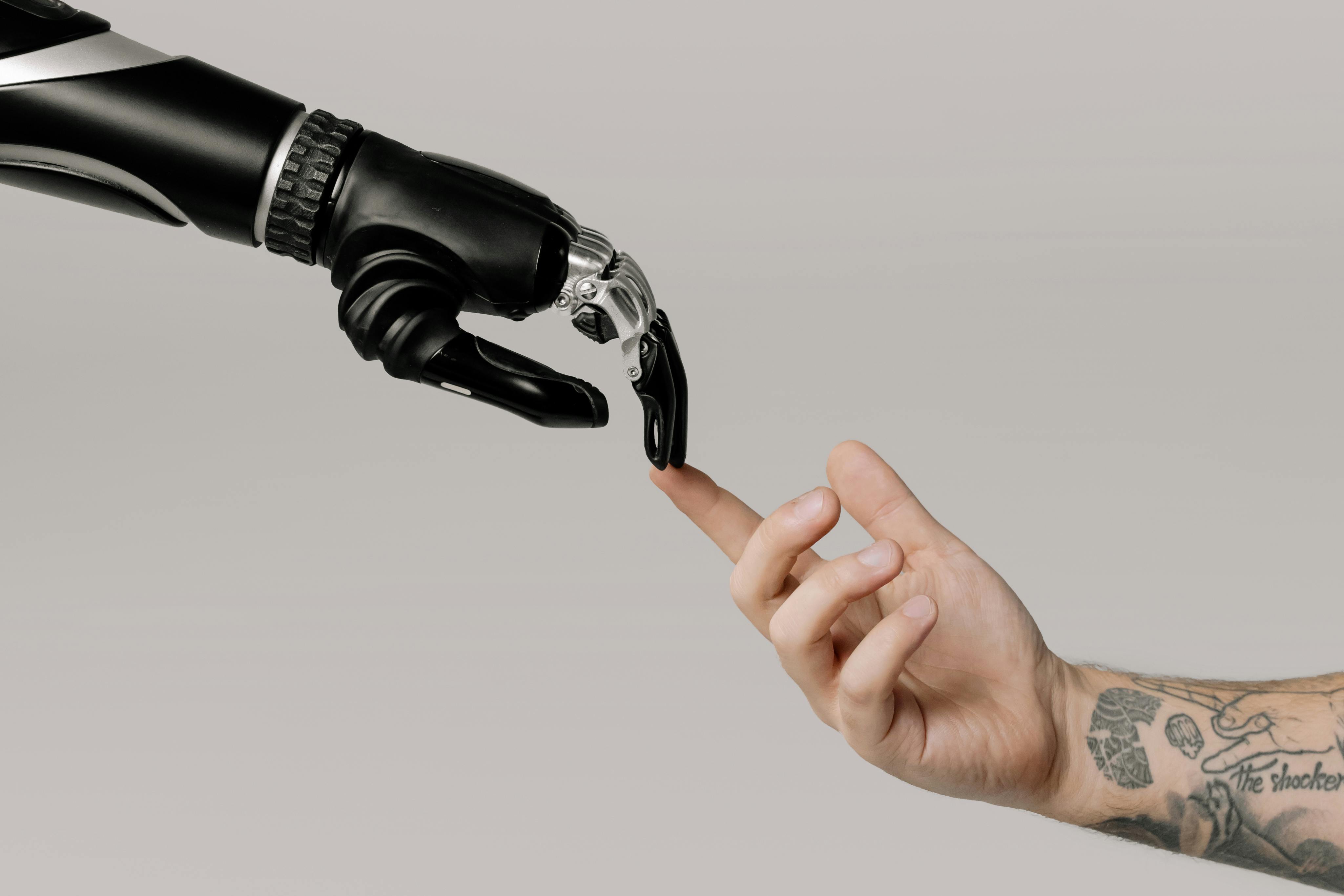AI Fashion Trends Forecasting for 2025
Blogs
•
Nov 26, 2024


The prevalence of AI in the fashion industry has surged dramatically in recent years, especially since 2020. This technological revolution has brought about a wave of innovation, transforming how brands design, market, and connect with their audiences. AI fashion trends forecasting has become a critical tool for predicting industry shifts, allowing brands to stay ahead in an increasingly competitive market.
In 2024, some of the standout trends highlighted by AI fashion trends forecasting included virtual try-ons, which offered customers immersive and interactive shopping experiences, and the rise of generative AI for producing hyper-realistic images, enabling brands to visualize their products like never before. Data-driven insights also played a pivotal role, helping brands predict trends, optimize supply chains, and deliver deeply personalized customer experiences.

As we look ahead to 2025, AI fashion trends forecasting suggests that the role of artificial intelligence will expand even further. From advanced digital avatars and metaverse-ready collections to sustainable AI solutions and augmented reality integrations, the coming year promises to push the boundaries of what’s possible in fashion. In this blog, we’ll dive into the key AI fashion trends forecasted for 2025 and explore how they are set to redefine the industry, offering brands and consumers a glimpse into the future of fashion.
AI fashion forecasting for 2024 overview and accomplishments
In 2024, artificial intelligence (AI) significantly transformed the fashion industry with the following advancements:
Generative AI played a pivotal role in creating hyper-realistic fashion imagery, enabling brands to produce diverse and inclusive visuals tailored to specific audiences. This approach democratized fashion marketing and provided smaller brands with the tools to compete on a larger scale.
AI-driven trend prediction leveraged massive datasets to anticipate upcoming fashion trends with unparalleled accuracy. This real-time forecasting allowed brands to stay ahead of consumer demand, offering collections aligned with emerging preferences and reducing the risk of overproduction.
AI also excelled at hyper-personalization, analyzing customer preferences and behavior to create curated shopping experiences that resonated deeply with individual consumers, boosting customer loyalty and conversion rates.

Our Top 10 Forecast for AI Fashion 2025
With 2024 being such a huge success for AI Fashion Technology. We feel like 2025 is going to be even better. With new technology coming in every day, here is our prediction:
Virtual sizing: According to a study, 73% of shoppers expect brands to understand their tastes and preferences.
We predict AI working on understanding the audience and figuring out the best sizes to showcase models to users.Generative AI taking over photography. Turning Flat lay images to AI fashion models wearing the apparel.
This technology already exists but the outputs are not good enough for commercial use.
We predict the technology getting better for 2025 and more use in the market.AI will play a key role in sustainability efforts by optimizing production cycles, reducing inventory waste, and supporting circular fashion initiatives.
Predictive analytics will help brands manufacture on-demand, minimizing overproduction and deadstock.Designers will increasingly rely on AI tools to conceptualize new fashion collections.
AI will assist with pattern creation, color trend analysis, and even suggesting entirely new styles, blending creative input with data-driven insights.To deliver on an Omnichannel Brands will integrate AI across all channels—e-commerce websites, physical stores, and social media—to deliver consistent, seamless customer experiences. AI chatbots and virtual stylists will assist shoppers 24/7.
We see a reduction on return rates as ecommerce websites get more and more optimized for customer experience and better optimized images.
AI will continue to enhance trend forecasting by analyzing vast datasets from social media, search patterns, and sales data, enabling quicker and more precise trend identification.
AI will be integrated on all the funnels of marketing according to a vogue business blog.
“If you are thinking about the customer journey from, you know, awareness all the way down to purchase, where would AI fit in? Everywhere is probably the answer,” - Corey Moran, head of industry, luxury and fashion at GoogleWe predict AI-enabled textiles will be able to monitor health metrics such as heart rate, body temperature, and movement.
These fabrics will integrate sensors that will collect biometric data, enabling real-time health monitoring without the need for intrusive devices.More accessible fashion shows. The AI fashion week started in 2023 and it will only get better making fashion shows accessible to everyone with more shows and genres.

Conclusion
As we look ahead, it’s clear that 2025 holds immense potential for AI fashion technology to reshape the industry further. With advancements in virtual sizing, generative AI-powered photography, and sustainability-focused solutions, brands will not only enhance customer experiences but also drive efficiency and reduce environmental impact.
The integration of AI across omnichannel platforms, paired with innovations in design tools and predictive analytics, promises to revolutionize how fashion is created, marketed, and consumed. These advancements will not only benefit large-scale players but will also empower smaller brands to compete in an ever-evolving market.
With technology improving every day, AI is set to bridge the gap between personalization, efficiency, and sustainability. The result? A more inclusive, customer-centric, and innovative fashion industry that’s ready to meet the challenges and opportunities of the future. 2025 will be the year where fashion and AI come together to set new benchmarks for creativity and progress.





Related insights
AI Fashion Trends Forecasting for 2025
Blogs
•
Nov 26, 2024

The prevalence of AI in the fashion industry has surged dramatically in recent years, especially since 2020. This technological revolution has brought about a wave of innovation, transforming how brands design, market, and connect with their audiences. AI fashion trends forecasting has become a critical tool for predicting industry shifts, allowing brands to stay ahead in an increasingly competitive market.
In 2024, some of the standout trends highlighted by AI fashion trends forecasting included virtual try-ons, which offered customers immersive and interactive shopping experiences, and the rise of generative AI for producing hyper-realistic images, enabling brands to visualize their products like never before. Data-driven insights also played a pivotal role, helping brands predict trends, optimize supply chains, and deliver deeply personalized customer experiences.

As we look ahead to 2025, AI fashion trends forecasting suggests that the role of artificial intelligence will expand even further. From advanced digital avatars and metaverse-ready collections to sustainable AI solutions and augmented reality integrations, the coming year promises to push the boundaries of what’s possible in fashion. In this blog, we’ll dive into the key AI fashion trends forecasted for 2025 and explore how they are set to redefine the industry, offering brands and consumers a glimpse into the future of fashion.
AI fashion forecasting for 2024 overview and accomplishments
In 2024, artificial intelligence (AI) significantly transformed the fashion industry with the following advancements:
Generative AI played a pivotal role in creating hyper-realistic fashion imagery, enabling brands to produce diverse and inclusive visuals tailored to specific audiences. This approach democratized fashion marketing and provided smaller brands with the tools to compete on a larger scale.
AI-driven trend prediction leveraged massive datasets to anticipate upcoming fashion trends with unparalleled accuracy. This real-time forecasting allowed brands to stay ahead of consumer demand, offering collections aligned with emerging preferences and reducing the risk of overproduction.
AI also excelled at hyper-personalization, analyzing customer preferences and behavior to create curated shopping experiences that resonated deeply with individual consumers, boosting customer loyalty and conversion rates.

Our Top 10 Forecast for AI Fashion 2025
With 2024 being such a huge success for AI Fashion Technology. We feel like 2025 is going to be even better. With new technology coming in every day, here is our prediction:
Virtual sizing: According to a study, 73% of shoppers expect brands to understand their tastes and preferences.
We predict AI working on understanding the audience and figuring out the best sizes to showcase models to users.Generative AI taking over photography. Turning Flat lay images to AI fashion models wearing the apparel.
This technology already exists but the outputs are not good enough for commercial use.
We predict the technology getting better for 2025 and more use in the market.AI will play a key role in sustainability efforts by optimizing production cycles, reducing inventory waste, and supporting circular fashion initiatives.
Predictive analytics will help brands manufacture on-demand, minimizing overproduction and deadstock.Designers will increasingly rely on AI tools to conceptualize new fashion collections.
AI will assist with pattern creation, color trend analysis, and even suggesting entirely new styles, blending creative input with data-driven insights.To deliver on an Omnichannel Brands will integrate AI across all channels—e-commerce websites, physical stores, and social media—to deliver consistent, seamless customer experiences. AI chatbots and virtual stylists will assist shoppers 24/7.
We see a reduction on return rates as ecommerce websites get more and more optimized for customer experience and better optimized images.
AI will continue to enhance trend forecasting by analyzing vast datasets from social media, search patterns, and sales data, enabling quicker and more precise trend identification.
AI will be integrated on all the funnels of marketing according to a vogue business blog.
“If you are thinking about the customer journey from, you know, awareness all the way down to purchase, where would AI fit in? Everywhere is probably the answer,” - Corey Moran, head of industry, luxury and fashion at GoogleWe predict AI-enabled textiles will be able to monitor health metrics such as heart rate, body temperature, and movement.
These fabrics will integrate sensors that will collect biometric data, enabling real-time health monitoring without the need for intrusive devices.More accessible fashion shows. The AI fashion week started in 2023 and it will only get better making fashion shows accessible to everyone with more shows and genres.

Conclusion
As we look ahead, it’s clear that 2025 holds immense potential for AI fashion technology to reshape the industry further. With advancements in virtual sizing, generative AI-powered photography, and sustainability-focused solutions, brands will not only enhance customer experiences but also drive efficiency and reduce environmental impact.
The integration of AI across omnichannel platforms, paired with innovations in design tools and predictive analytics, promises to revolutionize how fashion is created, marketed, and consumed. These advancements will not only benefit large-scale players but will also empower smaller brands to compete in an ever-evolving market.
With technology improving every day, AI is set to bridge the gap between personalization, efficiency, and sustainability. The result? A more inclusive, customer-centric, and innovative fashion industry that’s ready to meet the challenges and opportunities of the future. 2025 will be the year where fashion and AI come together to set new benchmarks for creativity and progress.





